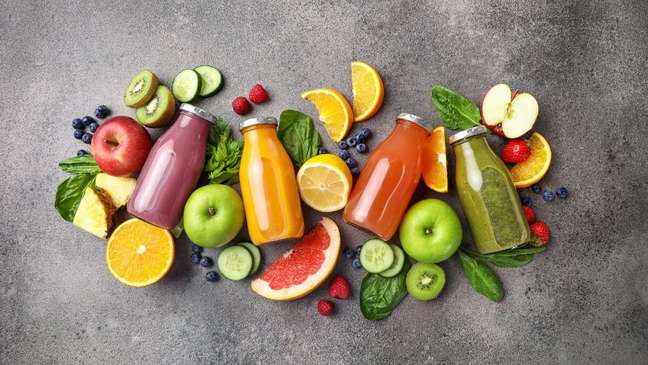The wide variety of fruit in Brazil provides us with incredible nutrients. The nutritionist explains the best way to consume to enjoy the benefits

We Brazilians are lucky to have an incredible variety of fruit in all seasons. Versatile and very tasty, they are also an excellent source of nutrients. But, like other foods, the amount of substances that are good for the body varies between natural, frozen and liquid (juice) forms.
“Usually, whole fruits are good sources of fiber, while fruit juices are not. And a cup of fruit juice, even 100% pure, has a lot more sugar than a piece or serving of whole fruit. Whole grains they are more satiating “, explains nutritionist Dr. Marcella Garcez, director and professor of the Brazilian Association of Nutrology (ABRAN).
Even with the benefits of the whole fruit, the expert says that the consumption of the juice should not be completely avoided. If it is 100% pure, it is preferable that it is not sifted or sweetened. He warns that consumption should be limited to 2 glasses per day. Frozen fruit can be a great option. This is a great alternative in cases where seasonality affects the supply of that fresh fruit.
“They are usually harvested and frozen quickly near the point of collection, so the nutrients are well preserved. In addition, some fruits in season, such as blueberries, are readily available in frozen form all year round. The key to selection is to choose. frozen fruit .without added sugar, “explains the doctor.
The nutritionist also adds that these products should be used still frozen or after a slow defrosting, in the refrigerator. Any form of rapid defrosting, such as microwaves, should be avoided to preserve nutrients.
What about dried fruit?
The doctor’s recommendations go beyond the liquid, natural or frozen form of the fruit. Dr. Marcella points out that fruits such as raisins, apricots and dried pineapples also have good nutritional values, which are maintained for a long time. However, they are higher in calories (due to water loss), which makes them good sources of energy for exercise.
“Some dried fruits usually have added sugar in the drying process, mostly mangoes and pineapples, or there are still those that are glazed in sugar syrup. Even for those with no added sugar, the compact volume and sweetness make it quite easy to eat a lot. of it at once. at once, rapidly increasing calorie consumption. Therefore, caution and balance are needed, “warns the doctor.
How to get the right nutrients
The practitioner points out that different fruits are good sources of different nutrients. “Citrus fruits are rich in vitamin C, for example, and other fruits are also good sources of other nutrients, fiber and antioxidants,” says the doctor, who highlights some important micronutrients found in the fruits:
Potassium: responsible for balancing fluids and electrolytes, maintaining healthy blood pressure. It is present in oranges, raspberries, bananas, cherries, pomegranates, melons and avocados.
Iron: participates in the formation of red blood cells and brain development in children. It is present in dried apricots and raisins.
C vitamin: it acts in the maintenance of the healthy immune system, in the healing of wounds and has an antioxidant action. It is present in citrus fruits, strawberries and kiwis.
Folate: necessary for DNA synthesis, red blood cell formation and early development of the neural tube in the fetus. It is present in oranges, mangoes and avocados.
Vitamin A: works to improve night vision, cell growth and immune function. It is present in cantaloupe melon.
In addition to the nutrients mentioned above, some options are also rich in carotenoids and polyphenols, including flavonoids. “It is a heterogeneous group of compounds, some of which are powerful antioxidants that protect against oxidative damage and can reduce the risk of certain diseases, such as cardiovascular disease and diabetes. In particular, citrus fruits are rich in the flavonoid class of flavanones, and blackberries, blueberries, blueberries and cherries are rich in the flavonoid class of anthocyanides, “adds Dr. Marcella.
As the doctor points out, there is no one fruit that has all the nutrients, so eating one variety is key to good health, according to the doctor. According to her, most adults should eat a variety of colors in about 3-5 servings per day.
“Prioritize whole fruit over juice. Give preference to what is in season, because it will be cheaper, but don’t forget your personal tastes to choose dried or frozen fruit. And enjoy your fruit: eat carefully to fully appreciate its smell, texture and taste “, he concludes.
Source: Terra
Benjamin Smith is a fashion journalist and author at Gossipify, known for his coverage of the latest fashion trends and industry insights. He writes about clothing, shoes, accessories, and runway shows, providing in-depth analysis and unique perspectives. He’s respected for his ability to spot emerging designers and trends, and for providing practical fashion advice to readers.







